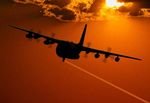AFRL Directed Energy Directorate - AF.mil
←
→
Page content transcription
If your browser does not render page correctly, please read the page content below
AFRL Directed Energy Directorate
Laser Weapon Systems
Why Laser Weapon Systems
The Department of Defense (DoD) invests
research and development (R&D) dollars
into directed energy solutions to fill gaps
identified by warfighters. Currently, the Air
Force is pursuing laser weapons systems
(LWS) along with high powered electro-
magnetics (HPEM) to enable operations
in a possible future battlespace involving
a technologically advanced adversary
Directed
with the ability to prevent access to—or
deny our ability to operate in—a given
area. There is also increased interest in
Energy defending against Unmanned Aerial
Systems (UAS) and hypersonic weapons.
both for the unique operational capabilities
of an airborne LWS and for the formidable
technical challenges that remain to be
Directorate Laser technology has made significant
overcome. Due to the sub- and transonic air
speeds of maneuvering tactical aircraft—
leaps in both performance and maturity such as fighter planes—in conjunction with
thanks to many years of research. Recent
tight packaging constraints, these obstacles
Speed of developments in electric solid-state and
fiber lasers, designed primarily for tactical
are far greater for aerial vehicles than for
ground-based systems. Naturally, these
Light to the engagement, now offer weapons-grade
power in a compact system suitable for
mutually interdependent challenges must
be addressed concurrently before an LWS
Fight by 2020 deployable platforms. For example, the
can be integrated into an aerial vehicle.
Navy, by virtue of its Laser Weapons
System dubbed LaWS, has fielded the A variety of obstacles impede the utilization
DoD’s first operational tactical laser on a of an airborne laser weapon system, several
ship, overcoming many of the policy and of which have been identified as being most
legal issues hindering deployment and crucial to its success or failure. Most
utilization. Today, laser weapons have fundamentally, it is essential to maximize
finally demonstrated sufficient technical laser power while reducing volume and
maturity to allow for integration onto air mass, maintaining a size, weight, and power
platforms for potential self-defense and
(SWaP) that offers tactical effectiveness.
offensive missions in the next decade.
Moreover, beam control systems must be
adequately advanced so as to enable
Overcoming Challenges precise aiming, tracking, and pointing
The Air Forces past airborne laser amidst the aero-mechanical jitter induced
demonstrations pushed the art-of-the-
possible, providing an appreciationby vibrations during flight. Similarly, system temper-
ature must be controlled via the dissipation of
waste heat, and high-speed aerodynamic flow
must be mitigated to avoid aero-optical disturban-
ces. Should any of these elements be allowed to
dominate, the laser beam can disperse, losing its
precision and effectiveness at operational ranges.
Finally, it is important to note that a laser system is a
complex piece of technology, which must be
ruggedized into a compact package capable of
surviving a battlefield environment.
Due to the complex logistical chain of chemical
In the face of these multiple technical difficulties, lasers, electrically-driven solid-state lasers have
AFRL plans to build on past demonstrations and become the medium of choice for the modern
advancements to sponsor a staged approach to LWS. These lasers have few moving mechanical
address and reduce technology risks. Initially, the parts and consume only electricity, rather than
focus will be on the development of subsystem hazardous and caustic chemicals. As such, solid-
technologies, making certain that each compon- state lasers are a fraction of the size of chemical
ent of the greater whole can meet the require- lasers, and their weight per power (kg/kW) is about
ments of the operational Air Force. A flight 30 times less, allowing for great savings in space
demonstration with a low-power laser will prove for electric lasers. Beyond considerations of size,
that targets can be tracked at sufficient range solid-state lasers offer a host of advantages.
and speed to allow for engagement with a laser
beam, demonstrating effective mitigation of Electric lasers have a nearly infinite “magazine size”
aerodynamic disturbances. Successful completion as long as an appropriate power supply is avail-
of this demonstration will lead to the graduated able. As such, the total number of shots they can
progression of ground and flight tests for laser fire is limited only by the fuel available to drive the
weapon systems offering medium-power for electrical power source, provided naturally via the
tactical operations. operation of the aircraft. Generally, banks of
batteries are employed for this purpose and can be
The continuing development and eventual sized to meet the requirements for virtually any laser
deployment of high-power laser systems has the power and magazine depth. For a 30 kW laser
potential to diminish operational risk, create system, the batteries could weigh on the order of
improved warfighting options, and enable new 300 pounds and fit within a volume of half of a
courses of action for military leadership. These cubic meter. Since they are constantly powered—
airborne demonstrations mark the first AFRL spon- “reloaded”—by recharging their electrical power
sored laser weapon flight program in more than 30 supply, an LWS can engage multiple targets very
years and are in direct response to the import- quickly and is limited for the most part only by its
ance placed by senior Air Force leadership on ability to dissipate waste heat. Effective thermal
rapidly maturing these systems for operational use. management systems can drastically increase the
rate of fire, either through traditional liquid cooling
loops or through two-phase cooling, wherein heat is
Laser Source Characteristics transferred to and melts a solid, the resulting liquid
Laser weapons can deliver precise and scalable of which is then cooled.
effects against a wide class of targets near-
instantaneously and at a very low cost per shot. For Functionally, the range of an LWS is dictated by
example, the type of gradual effects a 30kW laser laser power, beam quality, aero-optical and aero-
can deliver includes the denial, degradation, mechanical disturbances, and beam control
disruption, and destruction of a range of targets design. Weather and atmospheric conditions can
from UAS to small boats at a range of several also serve to limit effective range.
kilometers. More powerful lasers have counter-air,
counter-ground, and counter-sea applications
against a host of hardened military equipment
and vehicles at significant range.Current Laser Programs solid-state laser weapons system against
AFRL has two major integration and demonstration representative ground-based and surface-to-air
programs at the moment: the Self-Protect High targets of interest to Air Force Special Operations
Energy Laser Demonstrator (SHiELD) and the Command (AFSOC) and Air Combat Command
Demonstrator Laser Weapon System (DLWS). The
former addresses the risk of integrating a LWS onto
an aerial platform, while the latter demonstrates the
effect of a fully integrated ground-based LWS
against representative targets. In addition, several
enabling research programs are being conducted
to tackle key technical challenges at the subsystem
level. In total the Air Force and DARPA are
investing more than $500 million on these programs.
The Army, Navy, the Defense Advanced Research
Projects Agency (DARPA), and the Missile Defense
Agency (MDA) are also investing in the maturation
and integration of solid state laser technology on
relevant platforms for their applications. Major
aerospace industry partners include General
Atomics, Raytheon, Boeing, Northrop Grumman, (ACC), respectively. Such targets will include
and Lockheed Martin. rockets, mortars, and surface-to-air missiles. Key
features of the DLWS involve using infrared or
The SHiELD Advanced Technology Demonstration optical signals to acquire, track, and hold a
(ATD) is a two-phased effort to showcase the ability precise point on a target, and allowing the laser to
of a podded laser system. The program will develop deliver sufficient energy to disrupt, disable, or
and integrate a more compact, medium-power destroy it. AFRL is currently engaged with AFSOC to
LWS onto a fighter-compatible pod to demonstrate discuss how existing and planned airborne and
effectiveness of a LWS in a relevant flight environ- ground demonstrations of a LWS could address
ment for self-defense against ground-to-air and air- their requirements. The team is currently integrating
to-air weapons. The purpose of the SHiELD ATD is to the laser with the beam control system, and testing
reduce and retire the risk of an airborne LWS in a should begin shortly.
calculated and precise fashion, meeting and
resolving the aforementioned technical challenges
of power-scaling, beam quality, thermal manage-
ment, and packaging. In its first phase, the flight
demonstration is expected to prove that targets
can be tracked at sufficient range and speed to
subsequently engage with a laser. In the next
phase, a moderate-power laser will be incorpor-
ated to assess the performance of the LWS in an
operationally relevant environment. Flight tests
should occur in the FY20 timeframe.
The DLWS program is an effort funded jointly by the
Defense Advanced Research Projects Agency
(DARPA) and the Air Force. Its purpose is to
integrate DARPA’s 150 kW-class electric laser
(HELLADS—High Energy Liquid Laser Area Defense
System) with the Army’s beam control system at
White Sands Missile Range, addressing the
integration challenges for a ground-based LWS. This
will demonstrate the lethality of a fully integratedAFSOC Interest
The AFSOC commander has recently stated his weight allowances, and their target sets will likely
interest in both defensive and offensive directed be at closer range. As such, the laser weapon
energy capabilities in the AC-130 airframe against a technology needed to address the AFSOC
varied target set. Performance requirements for the concept should naturally develop while pursuing
full range of AFSOC missions have yet to be the farther-reaching lasers for a tactical platform,
specified, but AFRL assesses that a defensive LWS though the AFSOC AC-130 gunship laser weapon
that weighs less than 5000 lbs. is feasible. Our target concept will still require customization to address
weight for a podded solution on a fighter is less unique target sets and concepts of employment.
than 1500 lbs.
AFRL's laser programs are aiming to achieve a laser
weapon system that can operate in all flight
regimes against targets that are approaching at
supersonic speeds, which must be intercepted at
significant ranges. In the process of achieving these
goals, the incremental approach described above
will address AFSOC requirements. The AC-130
gunship is slower moving with larger volume and
Contact 377 ABW Public Affairs for more
information: (505) 846-5991 DSN 246-5991
Reviewed December 2016
http://www.kirtland.af.mil/afrl_rd/index.asp
Approved for Public Release - OPS-15-1038You can also read


























































